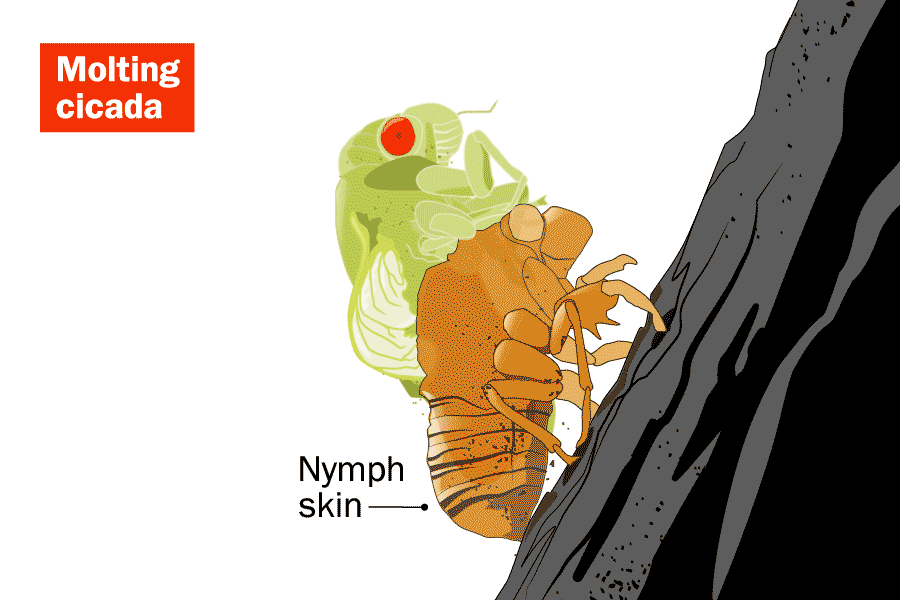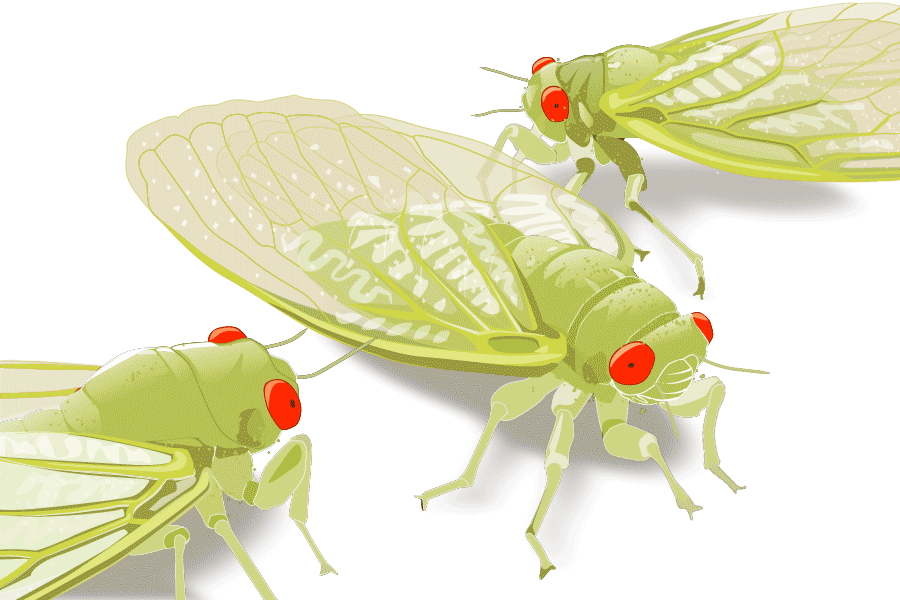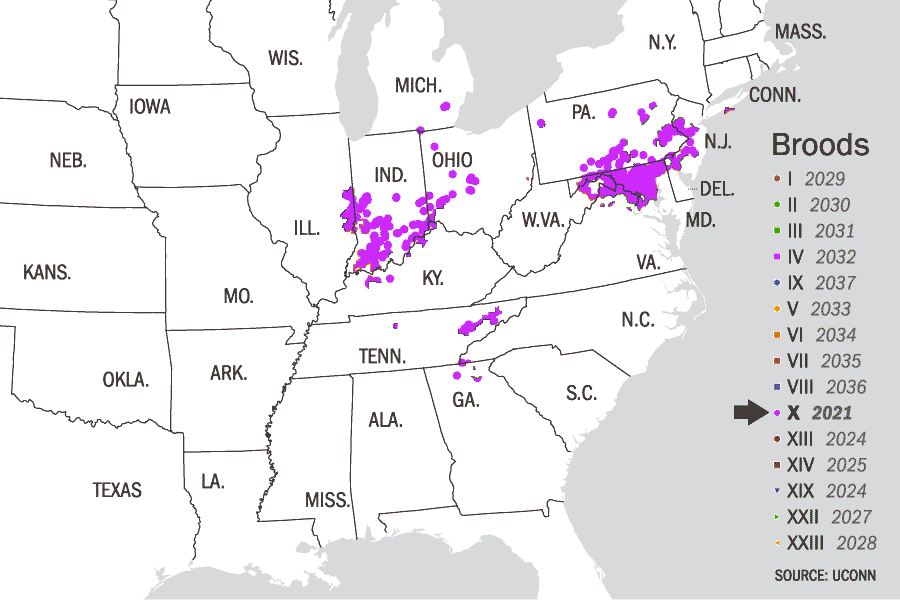
As COVID-19 vaccination continues, many of us are gearing up to come out of our shells after what feels like years of laying low. But this spring’s emergence of trillions of Brood X cicadas will make our renewed buzz of activity look like child’s play.
Every 17 years, trillions of Brood X cicadas emerge from below ground, ready to party. The circle-of-life spectacle comes with a deafening mating ritual—plus sex in the treetops, predation and also, inevitably, death. Just about as quickly as they emerge, the cicadas will all be gone. The adults will be left to decompose on the ground, and newly hatched nymphs will burrow into the soil, their home for the next 17 years until, like clockwork, the cycle begins anew.
Here’s an animated look at this year’s Brood X cicada emergence:
The nymphs emerge
Brood X cicada nymphs emerge at night, through exit holes they’ve created in the ground, when soil temperatures reach about 64℉.

A revolting molting
The same night they crawl above ground, cicada nymphs climb to vertical surfaces to shed their skin. Adult cicadas emerge from the shedded skin, littering piles of crunchy exoskeletons in yards across 15 U.S. states.

The bodies mature
Over the course of several hours, the cicadas’ bodies harden and darken. The insects keep a low profile during this time to avoid being eaten by predators—but they will soon fly to the treetops, where their mating ritual will take place six to 10 days later.

The (deafening) mating ritual begins
To woo females, male cicadas emit an ear-splitting mating call—muscle contractions cause their tymbal organ to vibrate, and their hollow abdomen amplifies the sound to deafening levels. A chorus of cicadas can reach 80 to 100 decibels—as loud as a lawnmower.

Predators have their fill
Birds, snakes, turtles, spiders, and small mammals love to eat cicadas—yet all this predation will barely put a dent in their population. (Some brave humans even snack on the protein-rich insects.)

Females lay their eggs
After male and female cicadas hook up, the females slice into small tree branches using their ovipositor—a saw-like organ—and lay nests of 20 to 30 eggs at a time. Females may lay 400 to 600 eggs in total before tumbling to the ground and dying.

The eggs hatch
Six to 10 weeks later, the eggs hatch into tiny nymphs, which fall to the earth and tunnel underground. The nymphs spend the next 17 years sucking on plant sap, waiting for their big moment back in the sun.

It’s a regional affair
Brood X is the largest and most widespread group of periodical cicadas in the United States. But with 15 periodical broods that emerge in predictable cycles of every 13 or 17 years, a massive cicada emergence can be found in some part of the country just about every year.

More Must-Reads from TIME
- Cybersecurity Experts Are Sounding the Alarm on DOGE
- Meet the 2025 Women of the Year
- The Harsh Truth About Disability Inclusion
- Why Do More Young Adults Have Cancer?
- Colman Domingo Leads With Radical Love
- How to Get Better at Doing Things Alone
- Michelle Zauner Stares Down the Darkness
Write to Lon Tweeten at lon.tweeten@time.com